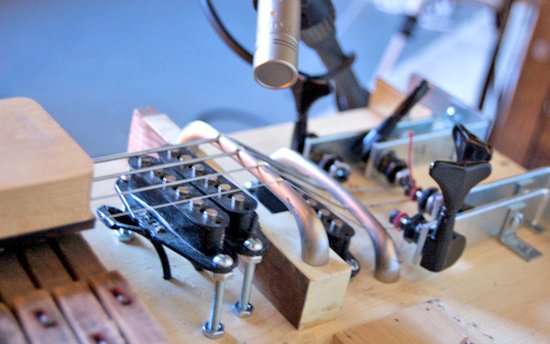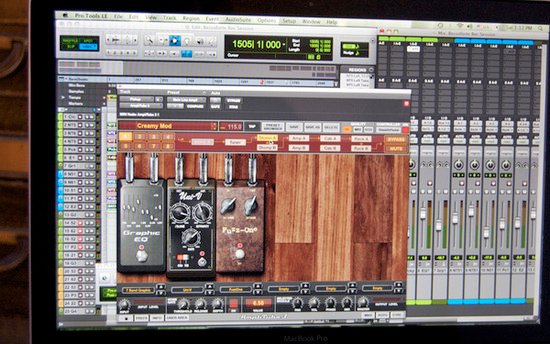Diego Stocco – Bassoforte from Diego Stocco on Vimeo.
Odds are you don’t have a dismantled piano you keep in the garden, awaiting conversion to a fantastic, imaginative electro-acoustic instrument. But that’s unlikely to make you covet the instrument above any less.
Diego Stocco is a composer, instrumentalist, sound designer, and mad inventor. Among many recent accomplishments, he’s responsible, in collaboration with Hans Zimmer, for some of the imaginative sounds that populated Guy Ritchie’s “Sherlock Holmes.” In many ways, he’s a reminder that the expressive potential of digital music isn’t limited to the virtual. He couples raw acoustic materials from sand to modified instruments with recording and digital processes. In the case of the Bassoforte, that means the use of IK Multimedia’s tone-rich amp models and effects in their flagship AmpliTube software. Hold a mic to something, or add a pickup, and the sound takes on a new form.
The Bassoforte’s construction was an exploration, building resonance out atop the mechanical construction at its heart with unexpected additions like a chimney cap. Then, its musical realization, too, calls upon Diego’s unique talents as a player and composer. He explains some of the process to CDM:
I built this thing by combining a bunch of different parts, including cabinet handles as bridges : )
It came out fun to play because I can interact with it in different ways, but it’s also tricky to control, because the tuning is a thing on its own.

He explains the tuning idiosyncrasies on the gallery of the instrument:
The neck is slightly tilted, so when I press a key I can push all four strings at the same time. But because the piano keys are not perpendicular to the frets, the tuning is imprecise (which I like), and can also generate in-between semitones. How strong I push the keys also affects the tuning.
It can be a little tricky to play, but overall, I’m very happy about how it came out.

He also tells CDM about how he’s relating to the instrument now that it’s built:
I’m still discovering it because I just built it, but it sounds [as if] for each [note], there’s also a secondary note that gets produced by the other half of the strings (on the side of the bell), so the higher the pitch, the louder this secondary note is. It creates these bi-chords that can sound very interesting.
The idea for the track I created came to me exactly because of that; I was just pressing the keys randomly trying to figure out what to do and then I found one very nice bi-chord, then a second one, and from there I got the idea for the rest. It wasn’t really a conscius decision to create a “Western” tune, it just happened that way 🙂
If you’re loving the track as much as I am, you can grab it on Bandcamp for $.99 in various high-quality formats, along with other albums with self-explanatory names like “Music from a Tree” and “Music from Sand.”
And for more information, check out the gallery Diego has posted, which includes additional notes from behind the scenes:
http://www.behance.net/gallery/Bassoforte/535175
Previously:
Real for Reel: The Amazing Sherlock Holmes Experibass, and More Winter Cinema Sounds